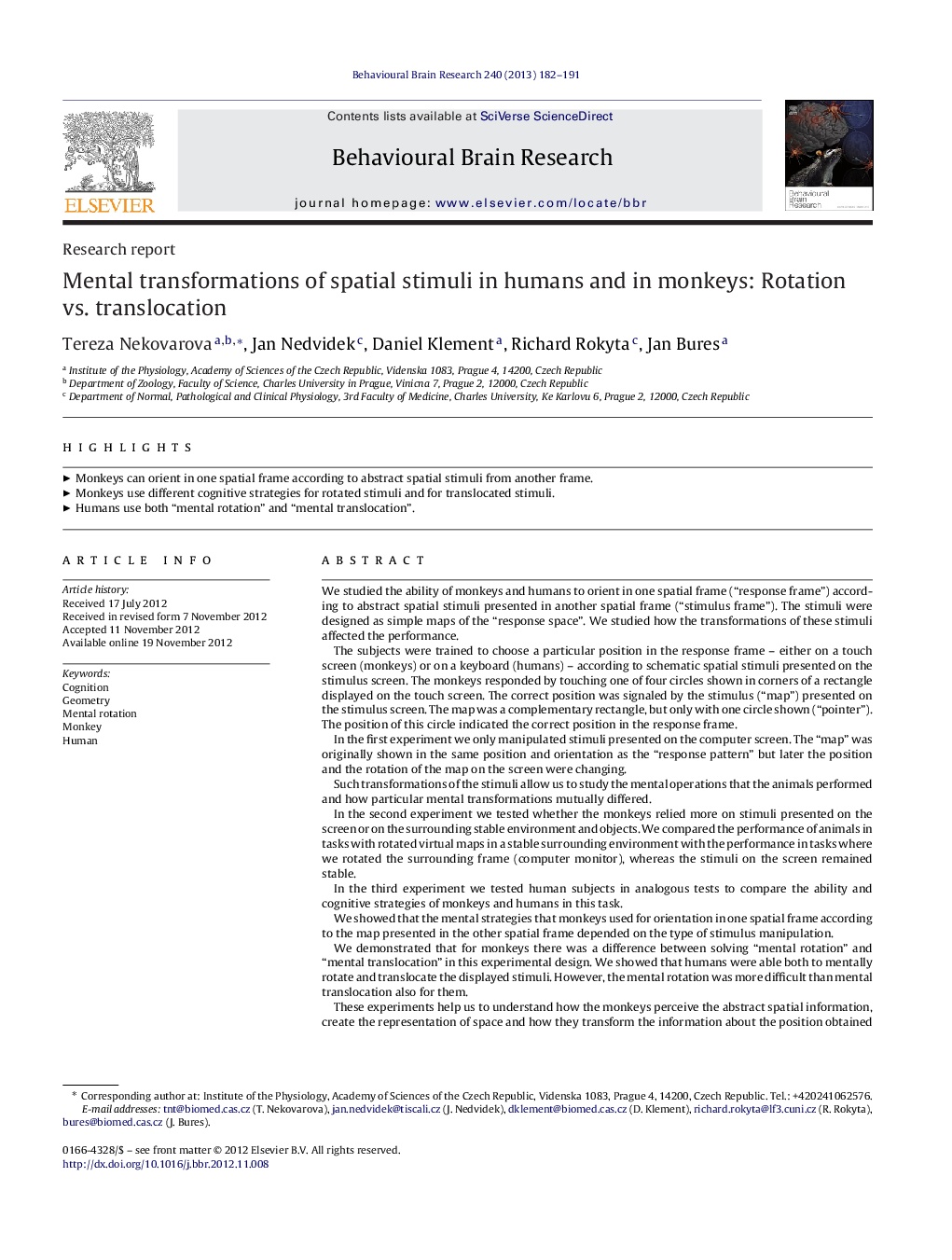| کد مقاله | کد نشریه | سال انتشار | مقاله انگلیسی | نسخه تمام متن |
|---|---|---|---|---|
| 4312865 | 1612992 | 2013 | 10 صفحه PDF | دانلود رایگان |

We studied the ability of monkeys and humans to orient in one spatial frame (“response frame”) according to abstract spatial stimuli presented in another spatial frame (“stimulus frame”). The stimuli were designed as simple maps of the “response space”. We studied how the transformations of these stimuli affected the performance.The subjects were trained to choose a particular position in the response frame – either on a touch screen (monkeys) or on a keyboard (humans) – according to schematic spatial stimuli presented on the stimulus screen. The monkeys responded by touching one of four circles shown in corners of a rectangle displayed on the touch screen. The correct position was signaled by the stimulus (“map”) presented on the stimulus screen. The map was a complementary rectangle, but only with one circle shown (“pointer”). The position of this circle indicated the correct position in the response frame.In the first experiment we only manipulated stimuli presented on the computer screen. The “map” was originally shown in the same position and orientation as the “response pattern” but later the position and the rotation of the map on the screen were changing.Such transformations of the stimuli allow us to study the mental operations that the animals performed and how particular mental transformations mutually differed.In the second experiment we tested whether the monkeys relied more on stimuli presented on the screen or on the surrounding stable environment and objects. We compared the performance of animals in tasks with rotated virtual maps in a stable surrounding environment with the performance in tasks where we rotated the surrounding frame (computer monitor), whereas the stimuli on the screen remained stable.In the third experiment we tested human subjects in analogous tests to compare the ability and cognitive strategies of monkeys and humans in this task.We showed that the mental strategies that monkeys used for orientation in one spatial frame according to the map presented in the other spatial frame depended on the type of stimulus manipulation.We demonstrated that for monkeys there was a difference between solving “mental rotation” and “mental translocation” in this experimental design. We showed that humans were able both to mentally rotate and translocate the displayed stimuli. However, the mental rotation was more difficult than mental translocation also for them.These experiments help us to understand how the monkeys perceive the abstract spatial information, create the representation of space and how they transform the information about the position obtained from one spatial frame into another. The comparison between humans and monkeys allows us to study this cognitive ability in phylogeny.
► Monkeys can orient in one spatial frame according to abstract spatial stimuli from another frame.
► Monkeys use different cognitive strategies for rotated stimuli and for translocated stimuli.
► Humans use both “mental rotation” and “mental translocation”.
Journal: Behavioural Brain Research - Volume 240, 1 March 2013, Pages 182–191